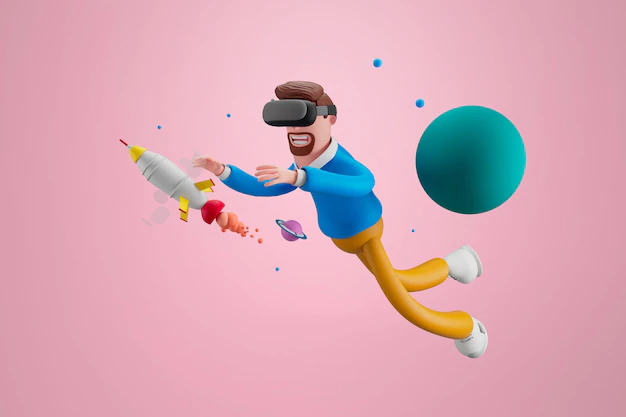Uses Of 5 Types Of Microlearning Videos In Learning and Development Program

Types Of Microlearning Videos In Learning and Development Program – In today’s fast world, where information is easily accessible, long educational materials are becoming old-fashioned.
Introducing microlearning videos, a new way of learning that has become extremely popular in recent years.
These short videos are changing how we learn, making it easier, more interesting, and better.
In this article, we will talk about microlearning videos. These videos are short and have many advantages. We will also see how they are making education different.
Read: Inclusive Learning Program: Secrets To Why You Need Microlearning
What is Microlearning?
Microlearning is a way of teaching that gives information in small and easy-to-understand bits. In simple terms, these pieces of information can be in the form of videos, pictures, quizzes, or written content, but we will mainly discuss microlearning videos in this article.
These videos are usually short and last a few seconds to a few minutes. They help learners concentrate on one specific topic or idea at a time.
Benefits of Microlearning Videos
1. Engagement: Microlearning videos are captivating because they are inherently interesting.
Their shortness and clear content make learners interested, stopping the chance of thinking too much or getting bored that can happen with longer lessons.
This leads to more students staying in school and having a better time while learning.
2. Improved Retention: Short, brief videos are better for the brain to remember information well.
People are more likely to remember the important parts of a short and focused video lesson called microlearning, than long and conventional lessons.
3. Cost Efficiency: With easily accessible and inexpensive recording equipment and editing software, schools and teachers can create good educational materials without needing a lot of money or materials.
4. Accessibility: Microlearning videos are very easy to access, which is one of their biggest benefits. Students can easily watch these videos on different devices, which helps them learn in a way that is easy and flexible.
Users can easily access and use bite-sized learning materials, whether on their smartphone or laptop.
5. Flexibility: Microlearning videos are flexible and can be used in different places for learning. They work well for teaching employees in companies, schooling, and even when you’re learning on your own.
Their ability to adjust to different situations makes them a strong tool for both teachers and students.
Types of Microlearning Videos
Right now, videos are the most liked type of digital content in the world. Cisco, a global leader in technology, has predicted that videos will make up 82% of all IT traffic.
That will happen soon. Out of all the videos online, short videos are the most popular ones that people watch.
Even companies know that videos are a great way to teach and engage employees. That’s why you’ll see videos being used a lot for employee training and development.
1. Whiteboard Animated Video
Right now, videos are the most liked type of digital content in the world. Cisco, a global leader in technology, has predicted that videos will make up 82% of all IT traffic. That will happen soon.
Out of all the videos online, short videos are the most popular ones that people watch. Even companies know that videos are a great way to teach and engage employees.
That’s why you’ll see videos being used a lot for employee training and development.
2. Interactive videos
These are used a lot now because they keep modern learners interested who get bored or easily distracted. Interactive videos used in microlearning are videos that are easy to understand and help learners by using interactions to grab their attention and make the information easier to remember.
In these types of videos, you can interact with them by clicking on things to reveal information, scrolling through content, hovering over something to see more, clicking on specific areas, following different story paths, taking quizzes, and filling in information.
360-degree videos are a new type of interactive videos that are used in microlearning. Here’s a really good example of a video that you can interact with.
3. Kinetic Topographic Videos
This kind of microlearning video uses words that move or change colors, shapes, fonts, graphics, and icons.
It also has someone talking or music playing in the background to help explain information or introduce ideas at the start of the course.
Kinetic typography is a fancy term for moving text. It is very popular and you have probably seen it online.
Take a look at this link to remind yourself and understand what kinetic typography videos are.
When you make videos by yourself, make sure to use short and clear text, match the audio with the text correctly, and use fonts, shapes, and graphics that prioritize being understandable rather than looking fancy.
4. User-generated videos
User-generated videos are also becoming popular in microlearning. User-generated videos are videos made by people who are learning something and want to share what they know about a certain topic related to their training, job, or organization.
User-generated content helps with social learning.
It is often shared in groups on social media, discussion forums, or on the learning platform or app.
The organization should value and reward videos made by users that provide clear and concise information. This will help encourage other employees to make similar videos.
Choosing the right microlearning video for your training program involves careful thinking and planning, considering your needs, available resources, and budget.
However, it is recommended to use a combination of these different types to increase the involvement, interest, and ability of students to remember what they have learned.
5. Demo and webcast Videos
Webcasts have been around since the 1990s and are a type of video used for eLearning. They are a useful way to turn a classroom training session with an expert into a shorter video for microlearning.
You can record live webinars and then break them into smaller parts with interactive elements, quizzes, and additional resources.
A demo video is a recording where someone shows how to do something. A demo video is an excellent way to teach learners a skill by showing them each step clearly.
How To Apply Microlearning Videos
1. Classroom Education: Teachers and professors use small videos to help students understand lessons better and give them extra information in traditional classrooms.
The videos can also be used to flip the classroom, which means students can watch the videos at home and then participate in discussions and activities during class.
2. Professional Development: People who want to get better at something or learn something new can find helpful videos to help them do that.
There are many websites and courses online that have short videos on lots of different topics. These can help people improve their skills and qualifications.
3. Self-learning: More and more people who teach themselves are using short educational videos on websites like YouTube and Khan Academy to learn new things.
This casual way gives people the ability to customize their learning to fit their own needs.
4. Employee Training: Companies are using short educational videos to teach their employees about different things like following rules and using new products.
Short videos help workers get important information quickly, making them better at their jobs.
Conclusion
Microlearning videos are changing the way we learn because they offer short, easy to understand, and interesting content. These tools are very helpful in different types of schools because they have many advantages.
Some of these advantages are that they help students remember information better, they can be adapted to different situations, and they are cost-effective.
As the world increasingly uses digital learning, short videos will definitely be important for shaping the future of education.
If you are a business wanting to train employees, a teacher wanting to improve the classroom experience, or someone who wants to learn new things, microlearning videos are a great way to do it. They are interesting and effective for learning.







